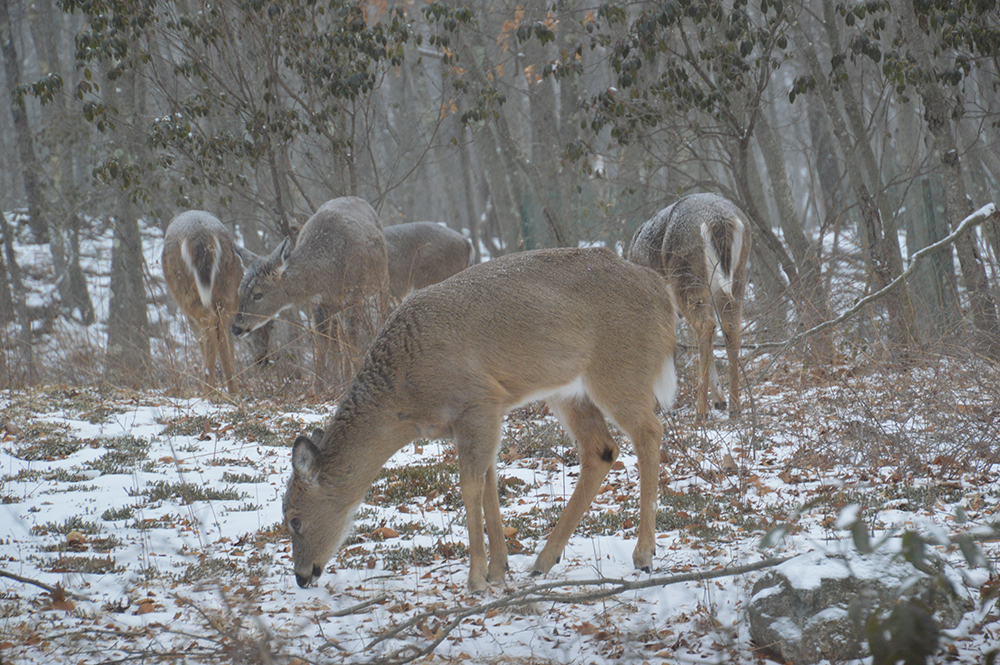Like other natural forest disturbances such as wind, insect outbreaks, and fire, browsing by white-tailed deer has strong and lasting effects on forest ecosystems. Deer browsing, which operates at varying intensities across the landscape, has long been viewed primarily as “damage” to forest ecosystems. But in our rush to label deer as “devastating” and “a bigger threat than climate change” to eastern forests, are we missing the complex and surprising outcomes that deer herbivory generates in our forests?

In a paper published in Science of the Total Environment in April by Highstead senior ecologist Ed Faison and USDA Forest Service Researcher Brice Hanberry, the authors argue that browsing by a diversity of large mammals shaped eastern North American forests for millions of years and that, as recently as 400 years ago, eastern forests were browsed by three to five large wild mammals compared to only one to two today. Thus, herbivory by deer should be viewed as a fundamental and long-standing ecological interaction rather than an aberration.
For example, intensive deer browsing can reduce woody plants and the height and abundance of taller wildflower species, while simultaneously increasing the abundance of shorter wildflower species and herbaceous plant diversity overall. As browsing thins the forest, the forest floor – often deeply shaded under a thick shrub layer without (or with less) browsing – is exposed to more light. Increased light combined with seeds transported by deer can promote new herbaceous plants at the same time that deer are consuming other plants.
Conventional wisdom states that deer destroy native plants and promote invasives, but the reality is more complex. While deer do consume many native plants and increase the abundance of several invasive species such as Japanese barberry, Japanese stiltgrass, and garlic mustard (by clearing space for them and not eating them), deer also reduce the abundance of many other invasives such as oriental bittersweet, multi-flora rose, honeysuckle, and burning bush by consuming them readily. To what extent deer will promote or reduce invasive plants in a particular forest will depend on which plants are available.
The long-term legacy of deer browsing on tree seedlings and saplings often results in sparse or delayed forest regeneration that may eventually reduce the number and diversity of canopy trees. Yet, paradoxically, delayed tree regeneration can also accelerate the development of structural diversity in young forests by creating canopy gaps and uneven height growth of trees. In other words, plant declines from deer browsing are only part of the story; browsing often has unexpected benefits if we are open to viewing deer-forest interactions more holistically.